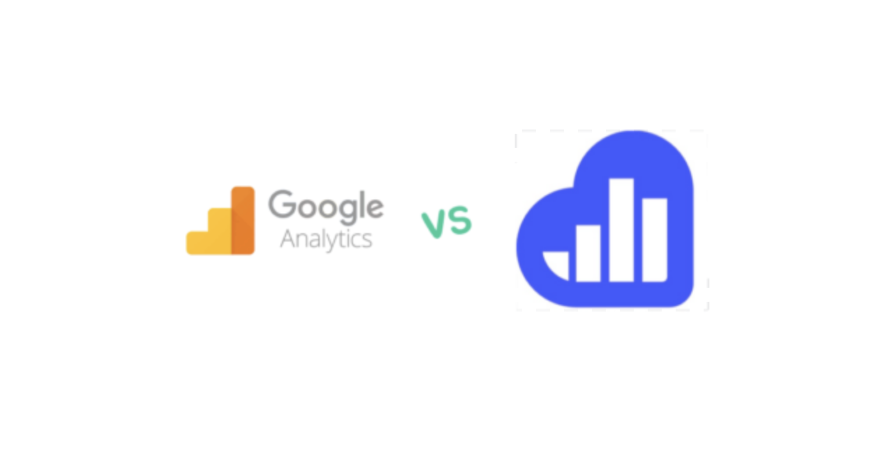A Beginner’s Guide To Cohort Analysis

Whether you’re doing it on purpose or subconsciously, it’s human nature to put things into categories. Maybe you organize your shoes based on color or your glassware according to their size. Whatever the case may be, by organizing your personal items into groups — also referred to as cohorts— you’re doing your very own cohort analysis.
Interested in learning more? Kissmetrics can help. Read on for our beginner’s guide to cohort analysis.
What is Cohort Analysis, and What Is It Used For?
A cohort is a group of individuals with shared characteristics.
Therefore, cohort analysis is a type of behavioral analytics in which users are grouped based on shared traits so you can better track and understand their actions. This allows you to ask more targeted, specific questions, and make informed decisions that will help to reduce churn and drastically increase revenue.
No matter your industry, cohort analysis could arguably be one of the most effective ways to gather information regarding your customers’ behavior and how they interact with your service or product.
Okay, but what exactly is a cohort analysis good for?
Great question.
Cohort analysis allows you to compare variables and changes between your digital marketing campaigns. You can test traffic, engagement and conversion rates of different cohorts; how one ad performs against another, which marketing channel is the most effective for which cohort, and more.
Even brick-and-mortar stores can test the effect of a website modification on user behavior.
Here are some of the things you can test using a cohort analysis:
- Ad content
- Target audience
- Channels
- Experiments/campaigns
- New product lines and service offerings
- Website redesigns
- Discounts, sales, promotion campaigns
Understanding the Different Pieces of a Cohort Analysis
Cohort analysis allows you to segment your customers by the time and channel they were acquired and analyze the retention rate of each. You can then put your resources behind the channels that produce better retention as well as increase retention rates in poor performing channels
To optimize retention rates in this fashion, you’ll want to segment your users in either of the two following ways:
Cohorts by Acquisition
Divide up your users by how and when they first signed up for services or purchased your product. You can get as specific as creating unique cohorts by the week, month, or even the particular day they first converted. Your level of specificity may be determined by the number of users you have buying or signing up on each day.
In the case of an app or software, this will allow you to determine exactly how long customers use your services or product before their engagement drops off. It also helps you to focus your efforts on optimizing user engagement well before the dropoff point.
Cohorts by Behavior
In addition to cohorts by acquisition, you also have the option to segment users by the behaviors they have or have not taken within a specific period of time. For instance, in an app, this could be anything from a launch, uninstall, or install to a combo of behaviors or transactions taken from within the app.
Your behavioral cohort would be made up of consumers who performed the same action within the same time frame.
Using the app example we mentioned above, this could be anyone who initiated an in-app purchase within the first seven days of download. You could easily use this and other unique distinctions to identify which segments of your users are most likely to stay and become long-term users.
From this point on, you can work to optimize your users’ experience and increase their likelihood of long-term engagement.
How To Perform a Cohort Analysis
Now that we’ve covered exactly what a cohort analysis is and how it’s used, you’re probably wondering how to perform one.
Identifying Your Cohort
First things first, accurately identify the cohort you’ll be tracking. Here are a few steps to determine which cohort you will need to track:
Decide on the correct question to answer.
The point of your cohort analysis is to return actionable information which you can use to improve your own and your user’s end result. With this in mind, it’s easy to see how crucial it is that you ask the correct questions like:
What do I want to learn?
How will I use this information to increase revenue, prevent churn, improve the user experience, etc.?
If you’re unsure how you’ll use the information on your cohorts, you might be tracking the wrong thing.
Choose the metrics that will best help answer your question.
Effective cohort analysis requires you to establish which event you’ll be tracking, as well as the specific properties related to that event. Ask yourself, what event will I be tracking and what insights will this help me to gather about my cohorts?
Define your metrics once you have the questions you’ll be asking, and this will help you to better define your cohorts.
To create a specific cohort, it’s important to decide on whether to target all users who took a particular action within a specific timeframe, or to distinguish a defining characteristic among them, such as those who purchased less than or more than a certain amount — creating two or more cohorts.
For instance, in gaming, one might choose to segment their lowest engagement users from their highest who signed up during the same timeframe. This way, they can identify how each cohorts’ actions, usage level, and purchasing behavior differs.
Basic Cohort Analysis With Excel
One of the most popular methods to perform a basic cohort analysis is in Microsoft Excel. Given that you’ve been tracking the data needed to answer the questions you’re asking, Excel allows you to manually segment your cohorts, import the information, crunch the numbers, and answer many basic questions.
Basic Cohort Analysis in Google Sheets
Another popular method to perform a basic cohort analysis is through Google Sheets. If you don’t currently have an effective behavioral analysis system in place and are looking for a way to crunch the numbers manually to perform your own cohort analysis, Google Sheets may be a good fit for you to help answer some basic questions.
Okay, but is there an easier and more effective approach?
As a matter of fact, there is. If you happened to look into Excel and Google Sheets, you’d find that cohort analysis without the help of a marketing analytics tool like Kissmetrics can be a bit cumbersome. Unless you have a data scientist on your team, answering anything but your simpler questions may be a challenge.
Sure, it’s possible, but it all boils down to preference. Ask yourself: do you have the resources and time to perform regular cohort analyses with Google Sheets or Excel?
Or would it be easier and more efficient to have a tool like Kissmetrics doing the work for you? That way you can answer virtually any question with very little resource expenditure.
The Takeaway
The power of identifying trends in your users’ behavior is obvious, but it’s up to you to start implementing this powerful solution in your business.
Always keep in mind that the key to effective cohort analysis is your ability to accurately collect information.
While the basic cohort analysis through Google Sheets and Excel allows product managers, marketers and others to better understand the habits of their specific users and the patterns that appear in their actions, a powerful behavioral analytics tool like Kissmetrics is necessary to make the most of this revelatory analytics system.
Sources:
https://www.edglossary.org/cohort/
https://www.techopedia.com/definition/5430/microsoft-excel
https://www.thebusinesswomanmedia.com/spot-consumer-trends-early/

